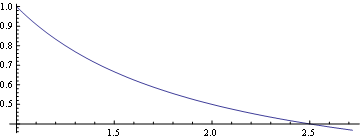Michael E2 wrote a wonderful solution for my question. Now I am considering the system:
$$ \begin{align*} x'&=x^2 y,\ x(0)=1\\ y'&=-x y^2,\ y(0)=1 \end{align*} $$
I am wondering how I can write this in vector form to produce a solution $\vec r(t)$ directly using NDSolve like Michael did.
Edits due to Suggestions: Daniel Lichtblau suggested:
f[vals : {_?NumberQ ..}] := {vals[[1]]^2*vals[[2]], -vals[[1]]* vals[[2]]^2};
vsoln = NDSolveValue[{x'[t] == f[x[t]], x[0] == {1, 1}}, x[t], {t, 0, 1}];
ParametricPlot[vsoln, {t, 0, 1}]
Which produces this plot.

And here is Michael E2 suggestion:
f[{x_, y_}] := {x^2*y, -x*y^2};
vsoln = NDSolveValue[{x'[t] == f[x[t]], x[0] == {1, 1}}, x, {t, 0, 1}];
ParametricPlot[vsoln[t], {t, 0, 1}]
Which produces the same plot.
This is absolutely amazing that this works. NDSolveValue interprets x'[t] == f[x[t]] as {x'[t],y'[t]}==f[x[t],y[t]] because of x[0]=={1,1} ? Wow! What is going on here?


NDSolve[{r'[t] == ({{0, 1}, {-1, 0}}.r[t]) r[t]^2, r[0] == {1, 1}}, r, {t, 0, 1}].) $\endgroup$